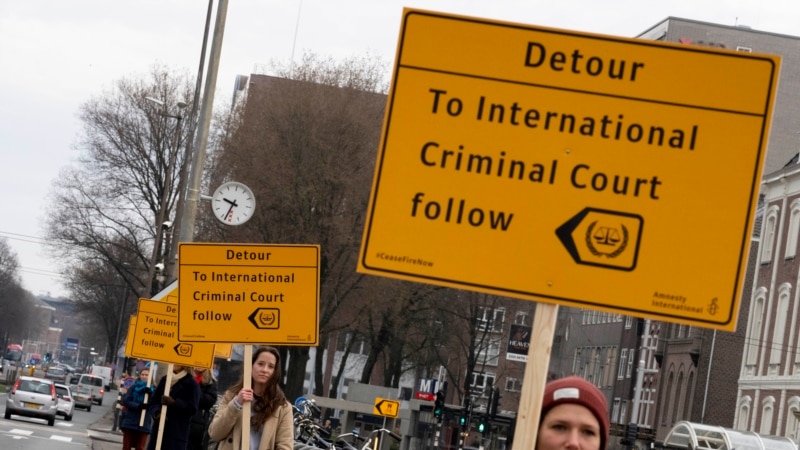The Netherlands’s National Holocaust Museum is opening on Sunday in a ceremony presided over by the Dutch king as well as Israeli President Isaac Herzog, whose presence is prompting protest because of Israel’s deadly offensive against Palestinians in Gaza.
The museum in Amsterdam tells the stories of some of the 102,000 Jews who were deported from the Netherlands and murdered in Nazi camps, as well as the history of their structural persecution under German World War II occupation before the deportations began.
Three-quarters of Dutch Jews were among the 6 million Jews murdered by the Nazis, the largest proportion of any country in Europe.
Dutch King Willem-Alexander and Herzog will visit a synagogue and open the museum against a backdrop of Israel’s devastating attacks on Gaza that followed the deadly incursions by Hamas in southern Israel on Oct. 7. Both pro-Palestinian and pro-Israeli protests are planned outside the events.
Herzog was among Israeli leaders cited in an order issued in January by the top United Nations court for Israel to do all it can to prevent death, destruction and any acts of genocide in Gaza. He accused the International Court of Justice of misrepresenting his comments in the ruling. Israel strongly rejected allegations leveled by South Africa in the court case that the military campaign in Gaza breaches the Genocide Convention.
“I was disgusted by the way they twisted my words, using very, very partial and fragmented quotes, with the intention of supporting an unfounded legal contention,” Herzog said, days after the ruling.
A pro-Palestinian Dutch organization, The Rights Forum, called Herzog’s presence “a slap in the face of the Palestinians who can only helplessly watch how Israel murders their loved ones and destroys their land.”
In a statement issued ahead of Sunday’s opening, the Jewish Cultural Quarter that runs the museum said it is “profoundly concerned by the war and the consequences this conflict has had, first and foremost for the citizens of Israel, Gaza and the West Bank.”
It said that it is “all the more troubling that the National Holocaust Museum is opening while war continues to rage. It makes our mission all the more urgent.”
The museum is housed in a former teacher training college that was used as a covert escape route to help some 600 Jewish children to escape from the clutches of the Nazis.
Exhibits include a prominent photo of a boy walking past bodies in Bergen-Belsen after the liberation of the concentration camp, and mementos of lives lost: a doll, an orange dress made from parachute material and a collection of 10 buttons excavated from the grounds of the Sobibor camp.
The walls of one room are covered with the texts of hundreds of laws discriminating against Jews enacted by the German occupiers of the Netherlands, to show how the Nazi regime, assisted by Dutch civil servants, dehumanized Jews ahead of operations to round them up.

